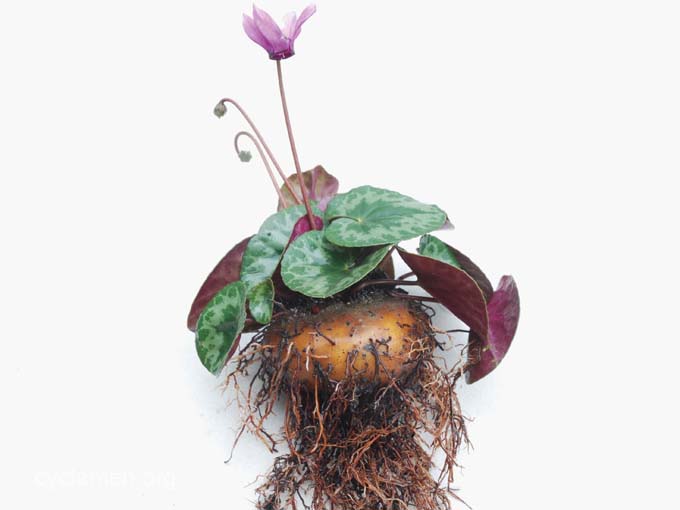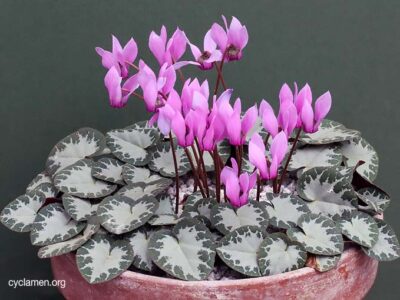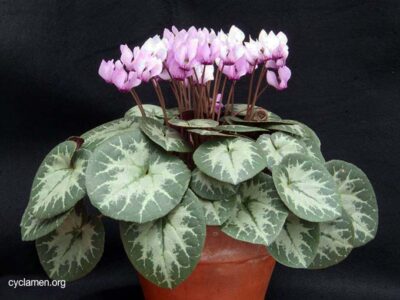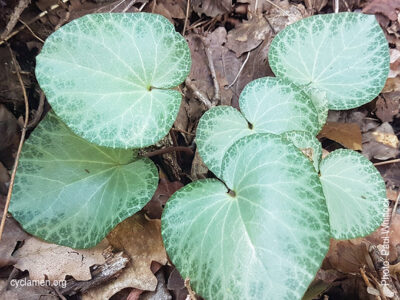Description
Flowers appear midsummer to late autumn, in the wild from June to October, rose pink to reddish purple, very fragrant with a sweet scent. The corolla lobes are reflexed, 15-25mm long, 5-10mm wide, with pointed tips, generally 90 degrees twist, without auricles at the base, which is a darker shade of colour. A white form, carmineolineatum, and a pure white form, album, are known.
Leaves appear in late summer, sometimes with the old leaves still present, round or broadly oval, edge smooth or slightly toothed, from plain dark green to all over silvered, through marbling in shades of green or silver, underside purplish, 3-8cm long, 2.5-8cm wide.
Tuber
Tuber spherical, becoming irregular with age, up to 6cm in diameter at maturity, pale brown, smooth, becoming rough with age, thick (2mm) diameter branching roots, arise from almost anywhere on the surface.
Distribution
Cyclamen purpurascens ssp purpurascens grows across a wide area of the Alps and into the Balkans, in France, Italy, Switzerland, Germany, Austria, Hungary, Slovenia and Croatia, while ssp immaculatum grows in a separate area of the western Carpathians, the Tatras, in the Slovak Republic.
Habitat
Cyclamen purpurascens grows in deciduous or mixed deciduous/evergreen woodland, under thick leaf litter, in humus rich pockets of soil on limestone but also grows in the open in scree, sparse grassland and above the tree line, from sea level, in the Balkans, to 1500m, in the Alps.
Cultivation
Cyclamen purpurascens is a very hardy plant and should be suitable for the garden in northwest Europe but does not seem to thrive as well as might be expected. Humus rich soil, which is not allowed to dry out in summer and shade seem to be the main requirements. It is most often cultivated as a pot plant in a cold greenhouse. A great deal of selection for leaf patterns has been carried out.
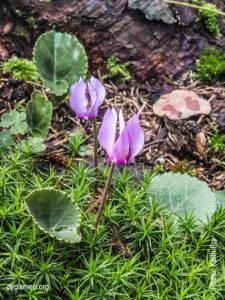
Cyclamen purpurascens
subsp. immaculatum

Cyclamen purpurascens
subsp. immaculatum
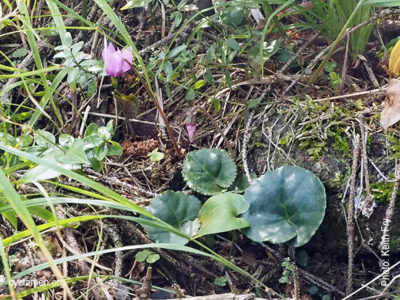
Cyclamen purpurascens subsp. immaculatum in the
Vel’ká Fatra of the western Carpathian Mountains.
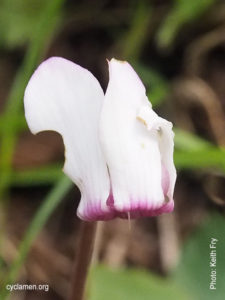
Subsp. immaculatum near
white-flowered form.
Cyclamen purpurascens subsp. immaculatum
Commonly referred to as ‘Fatra Form’ and formerly known as C. fatrense; not now considered a distinct species, so now referable as C. pupurascens subsp. immaculatum as described by Anežka Hrabětová-Uhrová in 1971.
Cyclamen purpurascens subsp. immaculatum grows only as a disjunct population in the Vel’ká Fatra and Nízke Tatry of the western Carpathian Mountains of the Slovak Republic.
Immaculatum meaning ‘unmarked’ refers to the leaves which are a plain matt or shiny green (plants patterned leaves in this Western Carpathian population have been reported, but they are rare) they are also more orbicular in shape than subsp. purpurascens. Flowers are generally pale to deep pink/magenta and typical of the species, a virtually white-flowered form with a carmine mouth similar in appearance to subsp. purpurascens f. carmineolineatum has also been recorded.
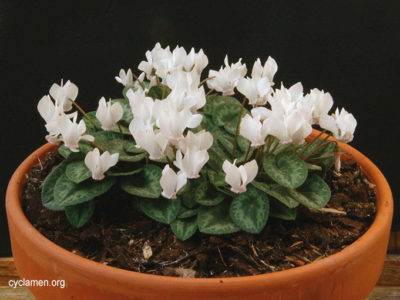
Cyclamen purpurascens forma album
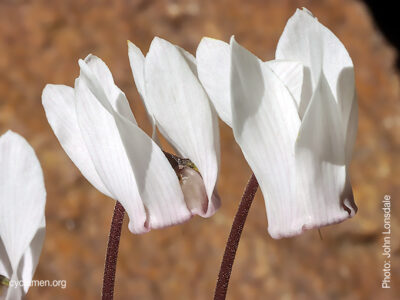
Cyclamen purpurascens forma album flower detail
Cyclamen purpurascens forma album
Pure white-flowered variants have been named as ‘Album’ but should all properly be referred to as C. purpurascens forma album; leaves have patterns typical of the species, some are pure albinos with no red at all on the leaf or flower stalk.

C. purpurascens f. camineolineatum between Geneva
and Albertville, Haute-Savoie, France
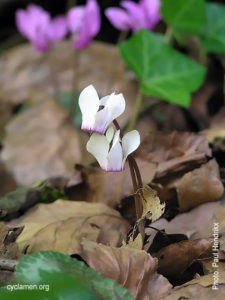
C. purpurascens
f. camineolineatum

C. purpurascens
f. camineolineatum flower detail
Cyclamen purpurascens forma camineolineatum
This form described by Paul Hendrikx in 2000 has white flowers similar to f. album but with a distinct carmine sinus at the mouth extending a short way up along the veins of the petals.
Unlike f. album which seems only to occur as rare individuals among pink-flowered plants, the plant described by Hendrikx as f. carmineolineatum was one of an entire population of approximately 400 plants.
The population was found by Manfred Koen in 1983 between Geneva and Albertville, Haute-Savoie, France at 1000m altitude; the habitat consisted of mixed beech and coniferous woodland; with the plants growing in moist leafmold in semi-deep to deep shade.
Examples have subsequently been found in Slovenia by Jože Bavcon.

